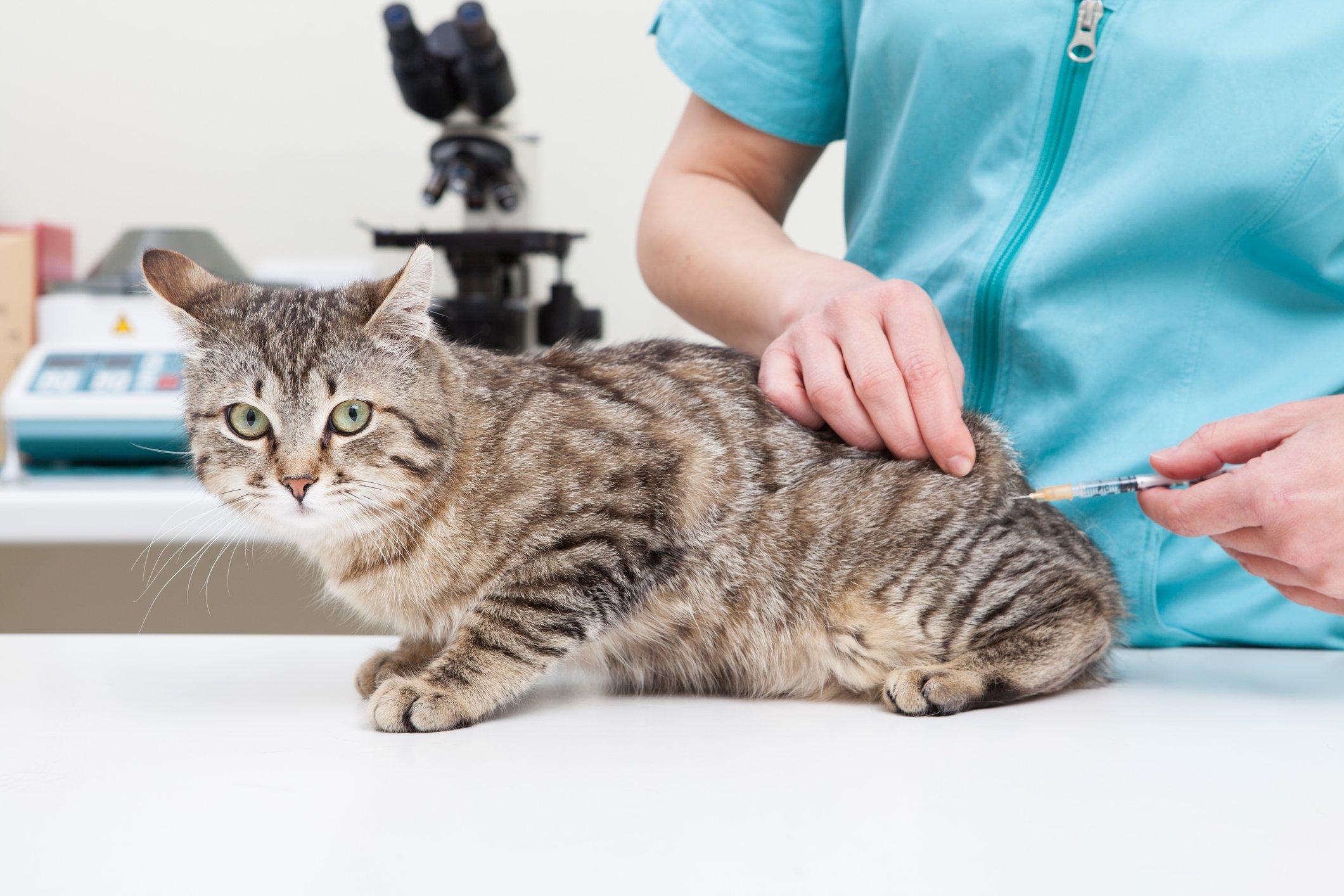© SashaFoxWalters/Getty Images

Google “free vaccines for life” and you will see page after page of veterinary practices that engage in this very type of program — free vaccines annually for cats who are patients at these clinics. They all operate a bit differently, but here’s the gist. If you take your cat to the clinic once a year for her wellness visit, vaccines deemed necessary at that time will be given at no cost.
Virtually all of the plans have a one-time enrollment fee. At the Zutilla Pet Clinic in Dalton, Georgia,, for instance, it’s $50, while at the Faithful Friends Animal Hospital in Davenport, Iowa, it’s $75. Prices can be a little higher on the coasts. In New York City’s Whitestone Veterinary Clinic it’s $149, and in Miami, the Paws and Claws Medical Center charges $100.
The other requirement — besides the enrollment fee — is that you cannot back out of bringing your cat to the clinic once a year for an annual wellness visit. Many clinics offer a 30-day grace period, so you have 13 months to remain in the program and continue to get free vaccines. If you go past the grace period, you have to re-enroll, and the clinics do not guarantee that the program will still be available — or be available for the same price.
In addition, a sick visit doesn’t count. That is, if between wellness visits your cat falls ill and you have to bring her in, it can’t be considered your once-a-year visit. The annual wellness exam is the only year-to-year visit that allows your pet to remain in the free-vaccine program.
Some clinics have requirements on top of those. For instance, we came across one that insists your pet be microchipped to enroll in the program — not a bad idea whether your cat is in a free vaccine program or not.
@ andresr/Getty Images

Is it a gimmick?
You might think, gee, I have to pay an enrollment fee, and I have to pay for an annual wellness visit even if I don’t want to take my cat in because she’s fine and running around as healthy as ever. And truth be told, yes, by offering this program, veterinary clinics are trying to cultivate an ongoing relationship that insures you continue to bring your cat to them. Putting the most cynical spin on it as possible, the free vaccines are a kind of loss leader, if you will — the way a supermarket might sell one product for less than it paid wholesale in order to get you walking up and down the store aisles in general.
But here’s the thing. Cats need one or another vaccine often enough that enrollment fees for the free for life programs tend to pay for themselves within two or three annual visits. If you start bringing your cat to a clinic when she’s young, you could potentially save on the order of $1,000 in vaccine bills over the course of your pet’s lifetime.
Then, too, while veterinary clinics are making sure you come for annual wellness visits when you enroll, your cat needs an annual visit, no matter what shape she seems in. So many health conditions, just as with people, start out without any noticeable signs and can be picked up only on blood tests and clinical exams. If you wait until such conditions are interfering with your cat’s quality of life, you usually end up paying much more to fix them — if they are even fixable at that point. Get a cat to the doctor’s office early in the game, on the other hand, and whatever might be wrong but not yet noticed by you will be simpler and less costly to tend to — and more likely correctable without irrevocable damage.
So yes, the doctor does get something out of it, but so do you and your cat. If it turns out your pet is perfectly healthy and doesn’t need any medical intervention, you get piece of mind, which you can’t put a price on.
Which are covered?
Most practices cover what are considered the core vaccines that all cats should get: those for rabies, rhinotracheitis, calcivirus and panleukopenia. Not all cats get boosters for all these diseases at every annual visit. In some states, for instance, rabies shots are required only once every three years. And while booster shots to inoculate against the other illnesses are thought appropriate once a year by many veterinarians, some think once every three years is sufficient.
But on top of the core vaccines, many veterinary practices that participate in free for life programs offer certain of the non-core vaccines, at least at a discount. These include the one against the feline leukemia virus (some even include that with the core vaccines). Another non-core vaccine offered in some free for life programs is the one against Bordetella. Your cat’s doctor can discuss why the non-core vaccines may or may not be important for your cat.
All the core vaccines and, in most cases, at least some of the non-core ones, will go a long way to keep your cat safe from debilitating, and sometimes deadly, diseases. The bottom line: If the veterinary practice you have chosen for your cat offers a free for life program, it makes sense to consider joining. Free and discounted vaccines when necessary; money saved over the long run; an annual visit that your cat should be having, anyway — there’s really no downside. — Larry Lindner




